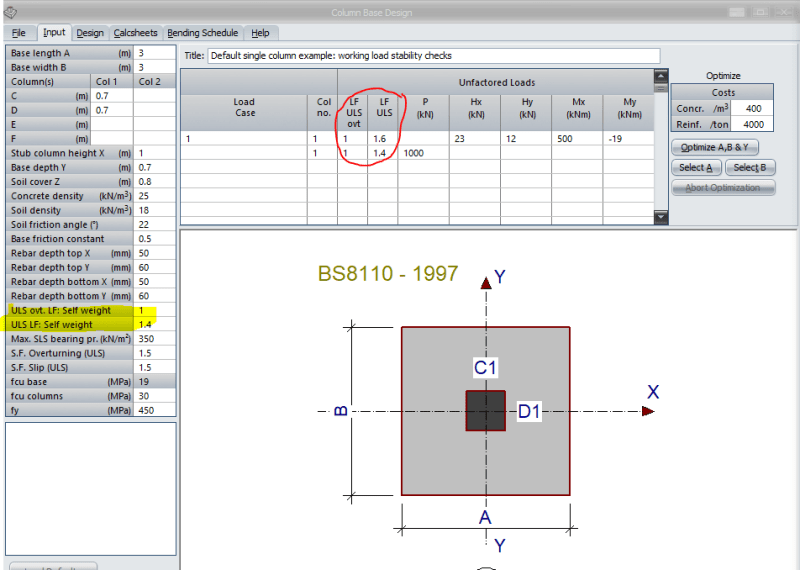Allow me to quote from the program Help:
[ul]
[li]LFovt: Load factor to use for overturning stability check. More information.[/li]
[li]LFULS: Load factor to use for calculating bending moment, shear and reinforcement at ultimate limit state analysis.[/li]
[/ul]
The "more information" link shows the following:
Analysis approach
Modern design codes tend to consider stability checks like overturning at ultimate limit state. Depending on your own preference, you can "force" the program to check stability at ultimate limit state or using the older method of working loads (permissible working stress) by adjusting the various load factors:
[ul]
[li]Checking overturning at ultimate limit state: The ratio of the cumulative effects of factored destabilising loads to the effect of the factored stabilising forces should not exceed unity. In this ratio, all forces are multiplied by the appropriate ULS factors that exceed unity and only the self-weight components of stabilising forces by the minimum ULS load factor that does not exceed unity. When using this approach in the program, you will likely want to set the load factors for overturning for all stabilising components of self-weight to the minimum prescribed ULS dead load factor, typically between 0.9 and 1.0. For all other loads, a ULS load factor of between 1.2 and 1.6 (depending on the relevant code) will be appropriate.[/li]
[li]Checking overturning using working loads: The older method requires the ratio of the cumulative effects of destabilising loads to stabilising loads to be greater than an appropriate safety factor, typically1/0.7or 1.5. When using this approach, you should enter unity values for all load factors for overturning and specify relevant safety factors for overturning.[/li]
[li]Checking slip at ultimate limit state: The program uses the entered load factors for ultimate limit state, LFuls,to evaluate slip. The safety factor for slip would thus typically be set to unity.[/li]
[/ul]
Do reach out to the technical support team at support@prokon.com. They are fast, friendly and super competent.
Stephen
Disclosure: I am affiliated with Prokon Software Consultants, the developers of PROKON.


